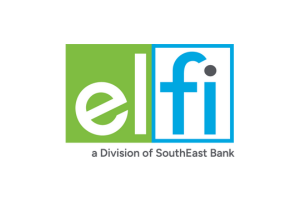Parent PLUS Loans, offered by the U.S. Department of Education, can be useful tools for parents who want fixed-rate financing for their child’s education. However, there’s much to consider before taking out Direct PLUS parent loans, like higher interest rates, limited repayment options and retirement goals.
If you have a two-parent household and believe that a Parent PLUS Loan still makes sense for your situation, being strategic about which parent should apply for the loan is essential.
Parent PLUS Loan: General eligibility requirements
Before jumping into which parent should shoulder a Parent PLUS Loan, here are its broad requirements:
- Relation. The applicant must be the biological or adoptive parent of a dependent undergraduate student. Graduate students are considered independent and are ineligible for Parent PLUS Loans; however, grad students can access a Graduate PLUS Loan instead.
- Credit. The borrower on the application must not have an adverse credit history. A credit check is part of the application process to identify bankruptcy, defaults, foreclosure, etc.
- Basic eligibility. The parent borrower must meet the requirements for federal student aid, such as being a U.S. citizen or eligible noncitizen.

Calculate Your Parent PLUS Loan Payments and Forgiveness Path
Parent PLUS Loan CalculatorConsiderations when choosing a parent for PLUS Loans
Given the general criteria for Parent PLUS Loans, certain scenarios may make one parent a more suitable applicant than the other.
Credit history
Each parent might have vastly different credit scores and credit histories. Since a positive credit history is a requirement, this factor is crucial in deciding which parent should take on the loan.
If one parent has adverse events listed on their credit report and the other doesn’t, it’s advisable for the parent with the stronger credit to apply.
Federal loan forgiveness
Parent PLUS Loans have few repayment plan options. The three repayment plans you can choose from are:
- Standard Repayment Plan.
- Graduated Repayment Plan.
- Extended Repayment Plan.
Parents pursuing federal student loan forgiveness and needing an income-driven repayment (IDR) plan can put their PLUS Loans through a Direct Loan Consolidation. This process makes the debt eligible for the Income-Contingent Repayment (ICR) plan.
Consolidation is the only way parent borrowers can participate in the Public Service Loan Forgiveness (PSLF) program. PSLF lets public service workers earn forgiveness after making 120 payments on an IDR plan while working for a qualified employer.
If eligible, the type of loan forgiveness parents are considering also matters when considering which parent should apply for Parent PLUS Loans. PSLF offers the quickest path to forgiveness after just 10 years. Conversely, getting forgiveness under the ICR plan while working in the public sector can take 25 years.
Let’s say one parent is eligible for PSLF, and the other is working toward ICR forgiveness.
In this scenario, the parent working at a qualifying employer in a public service capacity is best suited to apply for Parent PLUS loans for the fastest shot at forgiveness. This decision could save 15 additional years of student loan payments.
Income
Another area to consider is income. Although it’s generous to help your child pay for school, it’s still essential to assess your finances. You’ll need some type of income to pay back the loan.
Before submitting a Direct PLUS Loan application, consider these questions:
- Can you afford the monthly payments?
- What is your current income?
- What will be your income in retirement?
- Is your job stable?
- If you plan to pursue PSLF, do you plan to work for 10 years after taking out the loans?
Also, if you’re on an IDR plan, remember that your payment is calculated using your income. If the higher-income parent applies for the Parent PLUS Loan and consolidates to get on ICR, their monthly payments might be higher. Meanwhile, the lower-income parent, if married and filing separately, might qualify for a lower monthly payment.
Note: This strategy to file separate returns might also help high-income Parent PLUS borrowers, so only their individual income — not joint income — is used. This is especially true for married borrowers in community property states.
Let’s say the lower-income parent is close to or in retirement. If on ICR, that parent borrower could be eligible for $0 payments, depending on their income. That could change the entire financial landscape and make repayment much easier to manage.
Age considerations
Age matters with Parent PLUS Loans for a few reasons. Primarily, you want to avoid putting off your retirement goals by taking on another loan. Crunch the numbers to see how adding this loan program affects your budget.
Additionally, in the event you pass away while in repayment, your Parent PLUS Loans are discharged, and your spouse isn’t liable for the debt. Your loans are also discharged in the unfortunate event that your child, for whom you took on the loan, passes away.
Age and loan forgiveness
Another way age weighs into the equation is regarding loan forgiveness. If you’re pursuing PSLF, borrowers must put in 10 years of service after accepting the loan.
If you’re in your 50s and have another 10 to 15 years of work ahead, this might not be an issue. But if you’re in your 60s, meeting the 10-year or 120 qualifying payment requirement for PSLF might be challenging. Take a hard look at how much longer you plan on working.
Age without loan forgiveness
If you’re not pursuing PSLF, age might work in your favor for IDR forgiveness. If you’re in your 60s and retired, your income might qualify you for a $0 or very low payment. After 25 years, you can get any remaining balance forgiven after consolidating your loan to access the ICR plan.
The value of loan forgiveness post-2025
As mentioned above, Parent PLUS Loans are only eligible for the ICR plan after consolidation. The ICR plan undoubtedly has the worst terms of all the IDR options. It sets borrowers' payments at 20% of their discretionary income for a 25-year term. Other IDR options have lower percentages at 10% and a shorter 20-year term.
But Parent PLUS Loans, even when consolidated, don’t qualify for those other IDR plans. However, the “double-consolidation loophole” allows parents to consolidate twice. This strategy unlocks other IDR plans with greater benefits.
That means that you could access the most generous repayment option of them all, the Saving on a Valuable Education (SAVE) plan. The SAVE plan cuts payments down to 5% to 10% of your discretionary income. Plus, any unpaid interest is subsidized as long as you keep up with your payments.
Note: This Parent PLUS loophole is available for a limited time. The Biden administration set new rules to end the double-consolidation loophole on July 1, 2025. If you can take advantage of this before time’s up, do so.
Post-2025, parent borrowers won’t have access to the other IDR repayment options and will be stuck with the ICR plan.
Which parent should take out the Parent PLUS loan?
At first glance, picking which parent should assume the loan might seem like a surface-level decision. For example, it’s understandable that a parent with more time for the application process or taking a greater role in their child’s college financial aid planning might take the lead.
But deciding which parent should apply for Parent PLUS Loans shouldn’t be left to chance. The financial impact could be significant if the wrong parent applies.
If you want to transfer the loan to your child after they leave school, refinancing the Parent PLUS Loan is an option. However, refinancing federal loans makes the debt ineligible for a Direct Consolidation Loan, income-driven repayment and forgiveness options.
If you need expert guidance on whether you should take out Parent PLUS loans and how they’ll impact your financial life, book a pre-debt consultation with Student Loan Planner.
Refinance student loans, get a bonus in 2024
| Lender Name | Lender | Offer | Learn more |
|---|---|---|---|

|
$500 Bonus
For refinancing 100k or more (bonus from Student Loan Planner®, not SoFi®)
|
Fixed 3.99 - 9.99% APR
Variable 5.99 - 9.99% APR with all discounts with all discounts |
|

|
$1,000 Bonus
For 100k or more. $200 for 50k to $99,999
|
Fixed 3.99 - 9.74% APR
Variable 5.74 - 9.74% APR
|
|

|
$1,000 Bonus
For 100k or more. $300 for 50k to $99,999
|
Fixed 4.99 - 10.24% APPR
Variable 5.28 - 10.24% APR
|
|

|
$1,050 Bonus
For 100k+, $300 for 50k to 99k.
|
Fixed 4.99 - 8.90% APR
Variable 5.29 - 9.20% APR
|
|

|
$1,275 Bonus
For 150k+, $300 to $575 for 50k to 149k.
|
Fixed 4.84 - 8.44% APR
Variable 4.86 - 8.49% APR
|
|

|
$1,250 Bonus
For 100k+, $350 for 50k to 100k. $100 for 5k to 50k
|
Fixed 3.99 - 10.98% APR
Variable 4.86 - 12.39% APR
|
Not sure what to do with your student loans?
Take our 11 question quiz to get a personalized recommendation for 2024 on whether you should pursue PSLF, Biden’s New IDR plan, or refinancing (including the one lender we think could give you the best rate).
